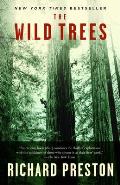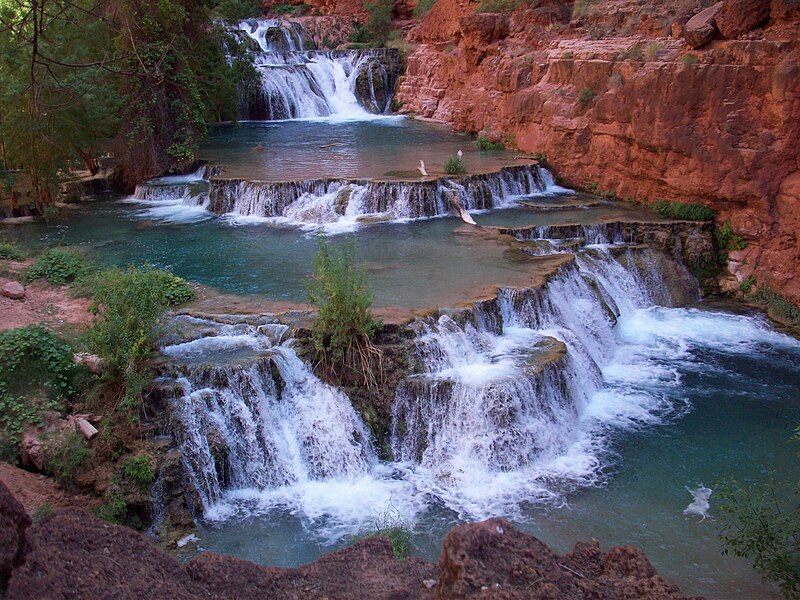I pulled a twig from my hair, clinging with the other hand to a small branch. A blue jay’s jeer pierced through my heavy breathing, but I saw no sign of the bird or my friend below. If a rock tumbled, I could go with it — 60 feet down to a scoured-out creek bed.
 |
| The scoured-out creek bed. Photo by Miranda Metheny. |
It was August 27, 2001, and in the first weekend of our senior year in college, I traveled to
Three Creeks Conservation Area with my friend Miranda. She hadn’t been in Missouri for twelve months, and I hadn’t been in woods since the start of the summer heat wave; after reading
The Wild Trees about the redwood canopies, I was craving a climb.
We skipped Rock Bridge State Park; it’s too mediated, too mapped. In the Columbia, Mo., microcosm, if Rock Bridge is Muir Woods, then Three Creeks is at least like Humboldt Redwoods State Park. There’s a little more left to discover. Some know this area for its “swimming hole” in Bonne Femme Creek that’s easy to find from a parking lot. Fewer know about Turkey Creek’s holes, cliff swallows and dripping moss. Even fewer have seen the dove habitat’s purple-blue shade on a full moon or smelled the musky green-gold grass as they broke a path through it. Like the canopy explorers, though, I don’t share these places with just anyone.
The land is by no means untouched. “Through the years, the timber was grazed and logged and occasional fires swept through the area,” the Missouri Department of Conservation website reads. “Because of these practices, the land has suffered...“ The geology, however, endures.
I have never done any truly dangerous climbs, and these rises are often biologically bland. But I think I understand in some small way what Steve Sillett felt when he looks up at a redwood. I feel the bluff tops beckon. Carved by many millennia of water and wind, bluffs hold geologic history I barely understand. They’re nearly vertical, and yet saplings and animals brave enough to defy gravity keep living on them.
When a human defies gravity, “brave” morphs to “reckless.” I was free climbing. My flat-soled Converse shoes began slipping in the soil and I stretched to the nearest root. It slipped too. Nothing felt stable. Loose rocks all around, and nothing else in reach. I was relying on one foothold at the base of a bush with my body pressed against the steep ground. Scrambling ensued, and a minute later I made it.
“Miranda,” I shouted. “I found another trail.”
“Are you staying up there?” she answered. Her voice could barely climb the bluff.
“I can come down, but it won’t be graceful.”
“I’ll come up. Give me a minute.”

As I waited for her ascent, I thought about how Steve Sillett didn’t curse in the canopy. After scrambling around the Ozarks for years, the reservation seems clear. A certain respect is reserved for nature when it forces us into tough places.
- I wrote this as an assignment for Bill Allen's "Readings in Science Journalism: Four Great Books on the Environment" class. The prompt was to "write a personal narrative about your own encounters with the natural world, reflecting on all the encounters described in The Wild Trees by Richard Preston." It was a good exercise, restricted to 500 words. I'm happy to share it with you now.









